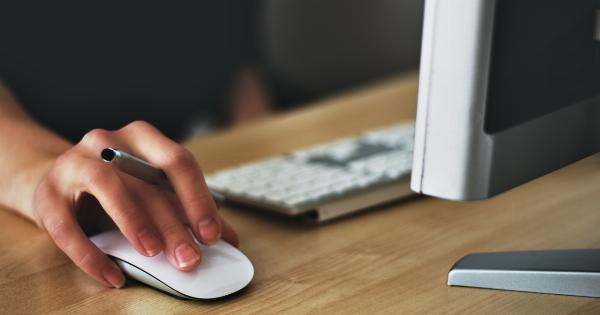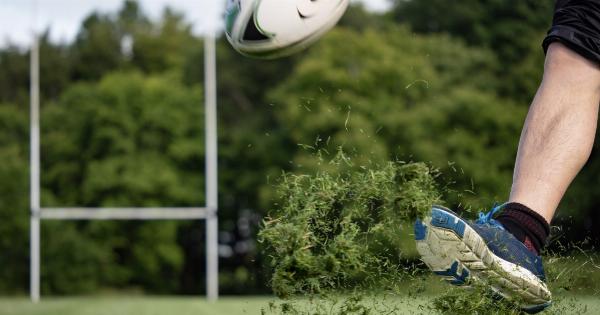Heel pain is a common condition that affects many people, from athletes to office workers. It can make simple tasks like walking or standing unbearable, impacting one’s quality of life.
Understanding the causes and treatments for heel pain is crucial for effective management and relief. In this article, we will explore some of the most common causes of heel pain and discuss various treatment options available.
Plantar Fasciitis
Plantar fasciitis is the leading cause of heel pain and occurs when the thick band of tissue connecting the heel bone to the toes becomes inflamed. It commonly affects runners and individuals with flat feet or high arches.
The pain is usually sharp and stabbing, especially in the morning or after long periods of sitting. Treatment for plantar fasciitis involves rest, stretching exercises, orthotic devices, and pain medications as needed.
Achilles Tendinitis
Achilles tendinitis is another prevalent cause of heel pain, specifically at the back of the heel. It occurs when the Achilles tendon, which connects the calf muscles to the heel bone, becomes inflamed or irritated.
This condition is often seen in athletes who engage in activities that involve repetitive jumping or running. Treatment for Achilles tendinitis includes rest, physical therapy, bracing, and sometimes surgery for severe cases.
Heel Spurs
Heel spurs are bony outgrowths that can develop on the underside of the heel bone. They are often associated with plantar fasciitis and develop over time due to the pulling and stretching of the ligament.
While heel spurs themselves may not cause pain, they can sometimes lead to inflammation and discomfort. Treatment for heel spurs may involve orthotic devices, stretching exercises, physical therapy, and if necessary, corticosteroid injections or surgery.
Stress Fractures
Stress fractures are tiny cracks in the bones that result from repetitive stress or overuse. While they can occur in various parts of the foot, they are commonly seen in the heel bone.
Stress fractures are typically caused by activities that involve running, jumping, or prolonged standing. Rest, immobilization, and gradual return to activity are important components of treatment for stress fractures. In some cases, surgical intervention may be necessary.
Sever’s Disease
Sever’s disease is a condition that primarily affects children and adolescents. It occurs when the growth plate in the heel becomes inflamed due to repetitive stress or overuse.
This condition is common among young athletes, especially those involved in activities like soccer or basketball. Treatment for Sever’s disease includes rest, ice, stretching exercises, and sometimes the use of orthotic devices.
Injury or Trauma
Heel pain can also result from injury or trauma, such as a fall or sports-related incident. In these cases, the pain is usually immediate and accompanied by swelling or bruising.
Treatment for heel pain caused by injury or trauma varies depending on the severity. It may involve rest, ice, compression, elevation (RICE), pain medications, physical therapy, or, in severe cases, surgery.
Foot Conditions and Structural Abnormalities
Foot conditions and structural abnormalities can contribute to heel pain.
Conditions like flat feet (pes planus) or high arches (pes cavus) can often lead to overpronation or oversupination, respectively, causing strain on the plantar fascia or Achilles tendon. Conditions such as bunions, hammertoes, or Morton’s neuroma (thickening of nerve tissue between the toes) can also cause heel pain indirectly.
Treatment may involve orthotic devices, stretching exercises, or addressing the underlying foot condition through conservative measures or surgery if necessary.
Arthritis
Arthritis, particularly osteoarthritis, can affect various joints in the body, including the heel. The degeneration of joint cartilage and inflammation often cause pain, stiffness, and swelling.
Treatment for arthritis-related heel pain aims to manage symptoms and slow down the progression of the disease. This may include lifestyle modifications, physical therapy, pain medications, corticosteroid injections, or, in severe cases, surgical intervention.
Peripheral Neuropathy
Peripheral neuropathy is a condition that affects the nerves outside of the brain and spinal cord. It can result from various causes, including diabetes, vitamin deficiencies, or nerve damage.
The symptoms of peripheral neuropathy include numbness, tingling, or burning pain in the affected areas, including the heel. Treatment focuses on addressing the underlying cause and may involve medications, physical therapy, pain management techniques, or lifestyle changes.
Tarsal Tunnel Syndrome
Tarsal tunnel syndrome is a compression or pinching of the posterior tibial nerve as it passes through a narrow tunnel located inside the ankle and foot. This condition can cause pain and tingling sensations in the heel and along the sole of the foot.
Treatment for tarsal tunnel syndrome may include rest, orthotic devices, physical therapy, pain medications, or, in some cases, surgery.
Treatment Options
The treatment for heel pain may vary depending on the underlying cause and severity of the condition. Here are some common treatment options:.
1. Rest: Adequate rest is crucial to allow the injured or inflamed tissues to heal.
2. Ice: Applying ice packs to the affected area can help reduce inflammation and alleviate pain.
3. Compression: Wearing compression socks or wraps can provide support and reduce swelling.
4. Elevation: Elevating the foot can help reduce swelling and promote healing.
5. Physical therapy: Specific exercises can help strengthen the muscles, improve flexibility, and alleviate symptoms.
6. Orthotic devices: Custom-made shoe inserts or orthopedic footwear can provide support and correct any structural abnormalities.
7. Medications: Nonsteroidal anti-inflammatory drugs (NSAIDs) or pain relievers may be recommended to manage pain and reduce inflammation.
8. Corticosteroid injections: In some cases, injections of corticosteroids may be used to reduce inflammation and provide temporary relief.
9. Extracorporeal Shockwave Therapy (ESWT): This non-invasive treatment option uses sound waves to stimulate healing in the affected area.
10. Surgery: In severe cases where conservative treatments have failed, surgical intervention may be considered. Surgical procedures aim to address the underlying cause of the heel pain and provide long-term relief.
It is important to consult with a healthcare professional for an accurate diagnosis and appropriate treatment plan for heel pain.
They will consider the individual’s medical history, symptoms, and any imaging studies to determine the best course of action.





























